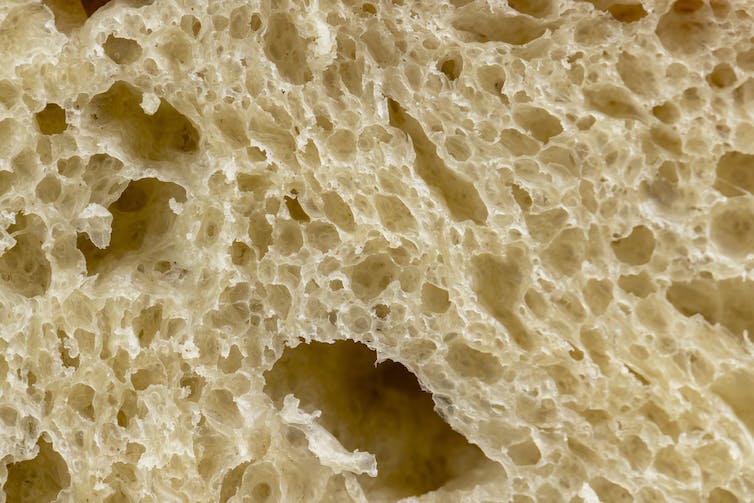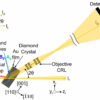Within the bread, rolls and baked goods on many tables this holiday season is an extraordinary substance – gluten. Gluten’s unique chemistry makes foods airy and stretchy.
I’m a chemist who teaches a chemistry of cooking class, and every year I ask my students, “What is gluten?” Common answers are “a sugar” or “a carbohydrate.” But rarely does anyone get it right.
So, what is gluten?
Gluten is a complex mixture of proteins. It makes up 85%-90% of the protein in flour. Proteins are natural biological macromolecules composed of chains of amino acids that fold upon themselves to adopt a variety of shapes.
Gluten comes from the endosperm of wheat, rye, barley and related plants. The endosperm is a tissue in the plant’s seeds that serves as a storage location for starch and protein. The milling process that creates flour releases the contents of the endosperm, including gluten.
The main proteins in the gluten mixture are gliadin and glutenin. These proteins make up much of flour-based food products’ structure. During the kneading or mixing part of making dough, these proteins form an elastic mesh, often referred to as the gluten network.

The texture of your bread will depend on how much you knead and work the dough and how the gluten network forms.
ligora/iStock via Getty Images
Creating a gluten network
Forming a gluten network is key for getting dough to rise. The network acts as a balloon that traps gases during the rising, proofing and baking processes. During rising and proofing, when the dough is given time to expand, yeast in the dough releases carbon dioxide as it eats and digests the sugars present. This process is called fermentation.
The baking process produces a number of different gases, such as carbon dioxide, water in the form of steam, ethanol vapors and nitrogen. The gluten network traps these gases and the dough expands like a balloon. If the gluten network is too strong, the gases will not produce enough pressure to make the dough rise. If it’s too weak, the balloon will burst and the dough will not stay risen. How strong the gluten network ends up being depends on how long you knead and mix the dough.
For the gluten network to form, you need to knead or mix the dough with some water – this aligns the proteins.
The glutenin proteins come in long and short chains that adopt coiled structures. These coils are held together through attractive forces between the loops of the coils known as intramolecular hydrogen bonds. Kneading and mixing break some of the attractive forces and align the glutenin proteins.
Bonds form between the individual glutenin chains through sulfur atoms on some of the amino acids that make up glutenin. When these amino acids – called cysteines – are brought into contact with each other, the sulfur atoms bond to one another, creating a linkage called a disulfide bond.
As more and more cysteines form disulfide bonds…



